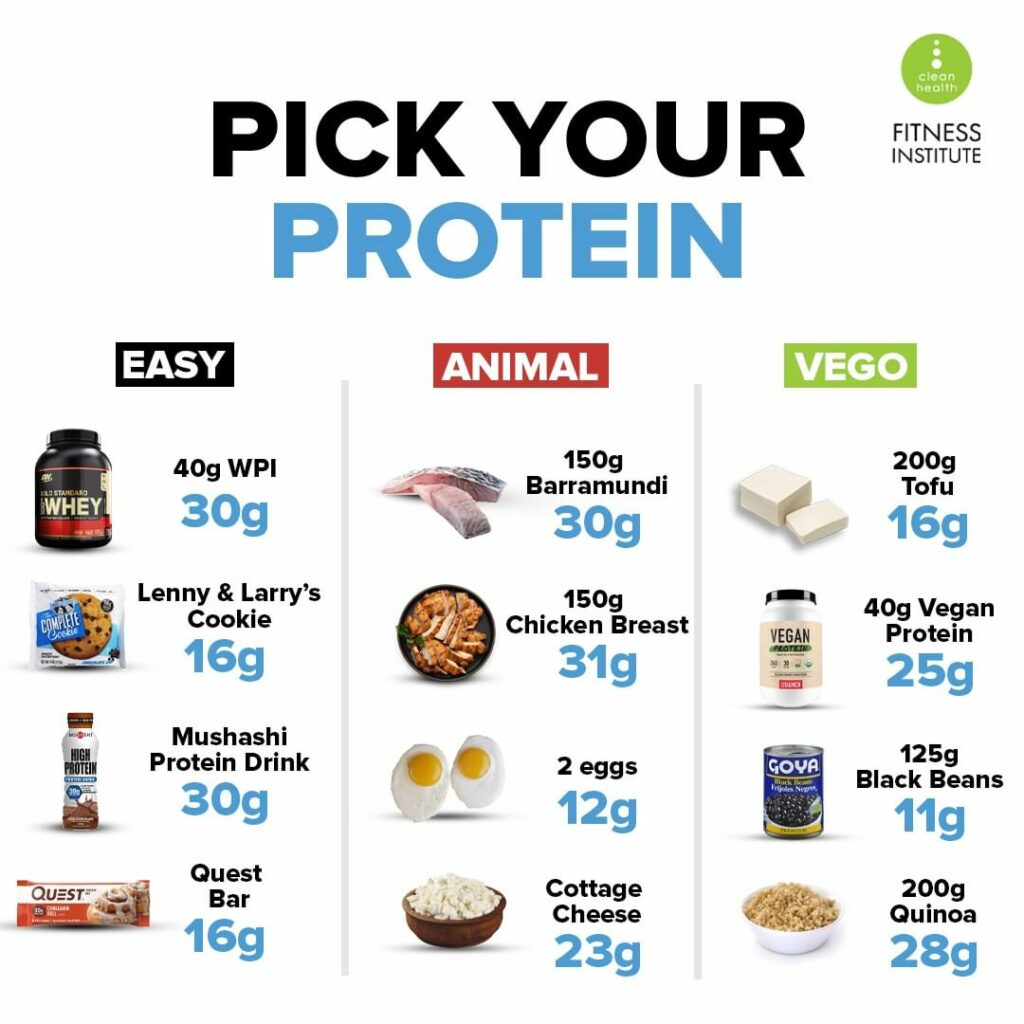
By Jade Mckee
What is Protein?
Protein is the most important of the macronutrients – which also include fats, carbohydrates, fibre, and alcohol. It is the building block of muscle, and is an ESSENTIAL macronutrient. This means your body NEEDS protein to function, but it is unable to produce it itself.
Protein plays specific roles in the body, depending on its make up. Not only does it build and repair muscle, but also organs, skin, hair and nails. Proteins are made up of amino acids, twenty of which are used by the human body. Nine of these are essential amino acids, so you must ingest them through your diet. Leucine is an essential amino acid of particular interest to us, due to the role it plays in muscle protein synthesis.
When you eat protein, the amino acids are liberated from the protein that has been consumed. They may then be used to make other proteins, or they may take part in other functions such as hormone regulation, damage repair, or immunity.
Why is Protein important?
Satiety
Protein is the most satiating of the macronutrients. By ensuring you are hitting your daily protein target, it will help you to stay fuller for longer. This is especially important when in a fat loss phase as it can help to prevent snacking between meals!
Muscle Protein Syntheses (MPS)
The most reliable way to trigger muscle protein synthesis in the body is to eat protein. For an average Gen Pop client, the levels of free amino acids in their bloodstream will be increased by the addition of protein to their diet, which will trigger an increase in MPS. When in a deficit, protein will also help to protect your lean body mass.
Thermic Effect of Food (TEF)
Protein has the highest TEF out of all the macronutrients. This means your body needs to use more energy to break down the protein you eat, then it does to break down the carbohydrates or fat. In the case of protein, it takes 20 – 30% of the energy it provides you with, for the protein to be broken down.
Where do you get Protein from?
It is important to remember not all proteins are created equal. One way you can assess the quality of the protein is through its Biological Value (BV). Higher quality proteins will have a higher BV – which indicates the proportion of the protein that the body is able to use. This also correlates to a high supply of essential amino acids within the protein source.
High quality sources of protein tend to come from animal sources, and include whey protein, meat, poultry, fish, eggs, and dairy products. Plant sources of protein tend to have a lower BV, and can include legumes, grain, nuts, seeds and vegetables.

When should you be eating Protein?
Research suggests spreading out your high quality protein serves over 3-5 meals per day.
How much Protein do you need?
In order to prevent muscle breakdown – especially when in a caloric deficit, resistance training combined with adequate protein consumption is a must! Protein targets are always the first macronutrient target to be set, after a calorie goal has been determined. These targets will vary, depending if your client is in a fat loss or hypertrophy phase, and also depending on their age.
As a general rule you should aim for:
Fat loss: 2.3-3.1g protein per kg of lean body mass per day
Hypertrophy: 1.4-2g protein per kg of body weight per day
Want to upskill yourself in the science of nutritional biochemistry and the interaction of protein, fats, carbs and how they influence the body to maximize client results?
Get certified through the Performance Nutrition Coach Certification Bundle, which includes the Level 1 & 2 online courses!
Click here to sign up now!
References:
Areta JL, Burke LM, Ross ML, et al. Timing and distribution of protein ingestion during prolonged recovery from resistance exercise alters myofibrillar protein synthesis. J Physiol. 2013;591(9):2319-2331. doi:10.1113/jphysiol.2012.244897
Dr Layne Norton’s The Science Of Nutrition Certification. Clean Health Fitness institute 2020.High and Low Biological Value Protein Foods. Retrieved from: https://www.eufic.org/en/whats-in-food/article/the-basics-proteins
Hoffman, J. R., & Falvo, M. J. (2004). Protein – Which is Best?.
Journal of sports science & medicine, 3(3), 118–130. Retrieved from: https://www.ncbi.nlm.nih.gov/pmc/articles/PMC3905294/
Mamerow, M, et al, “Dietary Protein Distribution Positively Influences 24-H Muscle Protein Synthesis in Healthy Adults”, Journal of Nutrition, 2014.Performance Nutrition Coaching Certification Level 1. Clean Health Fitness Institute 2020.
Phillips SM, Van Loon LJ. Dietary protein for athletes: from requirements to optimum adaptation. J Sports Sci. 2011;29 Suppl 1:S29-S38. doi:10.1080/02640414.2011.619204
Westerterp-Plantenga MS.The significance of protein in food intake and body weight regulation. Curr Opin Clin Nutr Metab Care. 2003 Nov;6(6):635-8.






